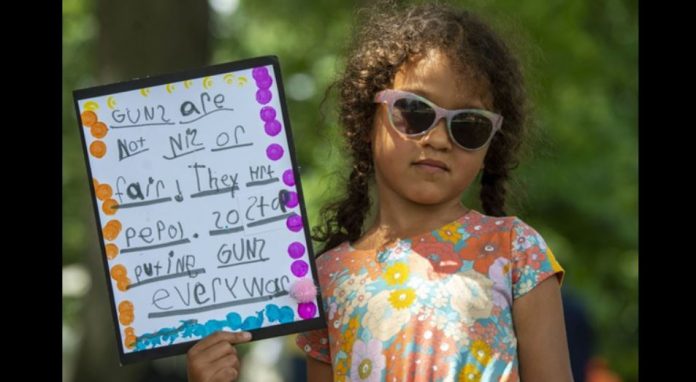
Dec. 20 (UPI) — Two studies released Monday in JAMA Pediatrics offer similarly stark views on the impact of gun violence on society’s most vulnerable members: children.
One indicates the overall U.S. child homicide rate has increased annually — on average 4.3% since 2013 — with a dramatic 27.7% rise rise from 2019 to 2020 alone.
The other shows a surge — of more than 50% — in pediatric firearms injuries that were treated at U.S. children’s hospitals during the COVID-19 pandemic, throughout 2021, versus pre-pandemic.
Put in a broader context, guns now kill more children up to age 19 than any other cause in the United States, according to a study of the latest data from the Centers for Disease Control and Prevention, published in the New England Journal of Medicine in April.
According to the first study, an original investigation led by the CDC, 38,362 children ages 17 and younger — nearly 7 in 10 of the victims male — died by homicide in the United States from 1999 to 2020.
Homicide rates recently increased significantly among boys, up 16.1% from 2018 to 2020, the researchers found, as well as among 6- to 10-year-olds, up 5.6% from 2014 to 2020; 11- to 15-year-olds, up 26.9% from 2018 to 2020; and 16- to 17-year-olds, up 19% from 2018 to 2020.
Homicide rates also climbed among Black children, up 16.6% from 2018 to 2020; Hispanic children, up 4.7% from 2014 to 2020; children in the South, up 6.4% from 2013 to 2020; and in both rural and urban areas, the researchers found.
Yet, since 1999, homicide rates have decreased for girls; infants; 1- to 5-year-olds; Asian or Pacific Islander children; White children; and children in the Northeast.
The scientists used the National Violent Death Reporting System data to describe the circumstances of these violent deaths.
Homicides of children 10 years or younger were most commonly precipitated by abuse/neglect and perpetrated by parents or caregivers, the researchers said.
Homicides of 11- to 17-year-olds “were most commonly precipitated by crime and arguments and perpetrated by someone known to them, especially friends and acquaintances,” the research paper says.
The researchers urged more targeted strategies to protect 6- to 10-year-olds, 11- to 17-year-olds, and children in certain geographic areas, as well as the need to “urgently address firearm violence, racism, and inequities at the root of youth violence.”
Rebecca F. Wilson, a behavioral scientist at the CDC, is the study’s corresponding author.
In an accompanying editorial, co-authors Dr. Diane N. Haddad and Dr. Elinore J. Kaufman, both at the University of Pennsylvania Perelman School of Medicine, tried to put the situation into context, calling the homicide rates preventable and unacceptable.
“Although much attention has been paid to rising violence during the COVID-19 pandemic, homicides of children have been rising consistently since 2013,” the authors wrote.
“The death of a child is a tragedy. The death of a child by homicide is unacceptable, and eliminating these deaths must be among our first priorities,” they wrote.
The second study, a research letter, used data from the Pediatric Health Information System that includes 49 tertiary-care pediatric hospitals across the United States.
The analysis included 4,574 children, all younger than 18 years who were diagnosed with firearm injury.
There were 1,815 firearm injuries before vs 2,759 such injuries during the pandemic, a 52% increase, the researchers found.





